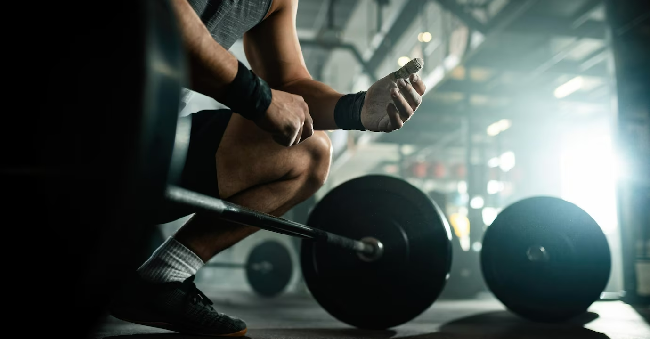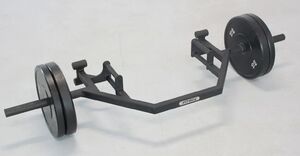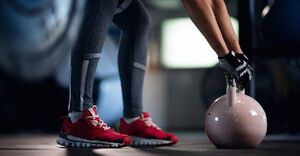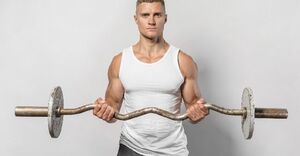
Gym Equipment Tutorial: Correct Postures and Training Sequences
Are you making the most out of your gym equipment training? Maintaining the correct posture is crucial for maximizing the benefits of your workout and preventing injuries.
In this article, we’ll explore the importance of proper posture, the benefits it offers, and how you can achieve it in your gym equipment training. We’ll also provide training sequences for different gym equipment to help you get the most out of your workout. Stick around to learn all you need to know for a safe and effective gym session!
Why Is Correct Posture Important in Gym Equipment Training?
Maintaining correct posture during gym equipment training is crucial for maximizing the effectiveness of workouts, preventing injuries, and promoting overall physical well-being.
Proper posture influences the body mechanics, ensuring that the targeted muscle groups are engaged optimally. This not only leads to better results but also reduces the risk of strains and other workout-related injuries.
By aligning the body correctly, individuals can enhance their safety and stability while using gym equipment, contributing to an overall positive fitness experience. Cultivating good posture habits during workouts can carry over into daily activities, improving posture, and reducing the likelihood of developing chronic muscular issues.
What Are the Benefits of Maintaining Proper Posture?
Maintaining proper posture during gym equipment training offers a multitude of benefits, including improved muscle engagement, reduced risk of injury, and enhanced overall workout performance.
When the body is in correct alignment, it allows the muscles to work more efficiently, leading to increased strength and endurance.
With proper body positions, the risk of strains and sprains is minimized, lowering the chance of injury.
Maintaining the right posture ensures that each exercise is executed with proper form, maximizing the effectiveness of the workout and leading to better overall fitness results.
How to Maintain Proper Posture in Gym Equipment Training?
Maintaining proper posture in gym equipment training involves focusing on correct technique, body positions, controlled breathing, and mindful movement to ensure optimal muscle engagement and injury prevention.
Proper technique is essential for executing exercises effectively and minimizing the risk of injuries. It’s crucial to align the body correctly while using gym equipment, as improper alignment can lead to strain on muscles and joints.
Breathing plays a vital role in maintaining stability and power during workouts. By emphasizing controlled breathing, individuals can enhance their performance and minimize the potential for dizziness or lightheadedness. Paying attention to movement control not only improves the effectiveness of the workout but also reduces the likelihood of strains or overuse injuries.
Start with a Warm-up
Begin the gym equipment training session with a comprehensive warm-up to prepare the body for effective performance and reduce the risk of injuries during subsequent exercises.
A well-structured warm-up routine can help increase blood flow to the muscles, improving their flexibility and range of motion. This, in turn, allows for better overall performance during strength and cardio exercises.
A thorough warm-up can mentally prepare individuals for the workout ahead, enhancing focus and readiness. By focusing on dynamic movements, light aerobic activities, and mobility exercises, a warm-up sets the stage for a safe and productive training session on gym equipment. It’s a critical step in promoting both physical and mental readiness for an effective and injury-free workout.
Adjust the Equipment to Your Body
Properly adjusting the gym equipment to align with your body dimensions is essential for ensuring safety, effective muscle engagement, and targeted workout results.
This ensures that the equipment is in the proper positioning to provide the best support for your body, helping to minimize the risk of injury and optimize the effectiveness of your workout.
Correct alignment also ensures that specific muscle groups are being targeted, promoting balanced muscle development and overall strength.
By carefully adjusting the equipment to fit your body, you can maintain proper posture and alignment, reducing the strain on joints and muscles and allowing for a more comfortable and efficient workout experience, ensuring optimal results.
Engage Your Core
Engaging the core muscles during gym equipment training is crucial for maintaining stability, enhancing core strength, and improving overall endurance and control.
Properly engaging the core muscles is crucial for stability during exercises, as they support the spine and maintain alignment. A strong core serves as the foundation for other muscle groups, allowing for precise and powerful movements. Incorporating core-focused exercises into your routine can improve strength and stability, reducing the risk of injury.
Keep Your Shoulders Back and Down
Maintaining proper shoulder positioning, with the shoulders kept back and down, is essential for ensuring correct posture, optimal alignment, and effective exercise technique during gym equipment training.
Proper shoulder positioning is crucial for preventing upper back rounding and maintaining good posture. It also allows muscles to engage more effectively, reducing the risk of injury and maximizing workout effectiveness.
Prioritizing shoulder alignment helps target specific muscle groups and achieve better results from gym sessions. Don’t overlook the importance of proper shoulder posture in your fitness routine.
Keep Your Feet Hip-Width Apart
Maintaining a hip-width apart foot positioning is crucial for optimizing balance, stability, and overall body control during gym equipment training exercises.
This positioning allows the feet to provide a sturdy foundation, distributing body weight evenly and reducing the risk of toppling over while using gym equipment. By positioning the feet at hip-width apart, individuals can enhance their center of gravity, promoting better balance and stability.
This proper foot positioning also helps in ensuring proper alignment of the body, leading to improved posture and reduced strain on the joints during various workout movements.
Breathe Properly
Practicing proper breathing techniques is essential for maintaining correct posture, facilitating controlled movement, and enhancing exercise performance during gym equipment training.
Deep inhalation and exhalation are key to maintaining stability and support for the spine during exercise. By controlling your breathing, you can efficiently distribute oxygen to your muscles, optimizing their performance. This technique also helps manage exertion and prevent fatigue, allowing for proper form and precise execution of exercises.
Incorporating these techniques into your workout routine can lead to improved endurance, strength, and overall efficiency.
Training Sequences for Different Gym Equipment
Training sequences for different gym equipment involve structured repetitions, sets, and intervals designed to target specific muscle groups and maximize workout effectiveness.
When using the leg press machine, a typical training sequence may include 3 sets of 10-12 repetitions with a 1-2 minute rest interval between sets. This helps to effectively engage the quadriceps, hamstrings, and glutes.
Similarly, for the chest press machine, a sequence of 4 sets of 8-10 repetitions, with a slightly longer rest interval, can effectively target the chest and triceps. Structured repetitions and intervals are crucial for achieving muscle fatigue and promoting muscle growth.
Chest Press
The chest press exercise on gym equipment is designed to target the pectoral muscles, promoting upper body strength, and enhancing overall muscle capacity.
The chest press is a key workout for developing chest muscles and is commonly included in strength training routines. By adjusting the weight and resistance, individuals can gradually increase their muscle capacity and endurance.
This exercise targets the triceps, shoulders, and back muscles, promoting overall upper body strength and stability. Consistently incorporating the chest press can result in enhanced muscle definition and a well-proportioned upper body physique.
Lat Pulldown
The lat pulldown exercise on gym equipment targets the back muscles, promoting improved posture, enhanced muscle engagement, and effective exercise technique.
The lat pulldown exercise is a highly effective way to strengthen the upper back. It targets muscles such as the latissimus dorsi, teres major, and rhomboids, improving posture and overall upper body strength. Additionally, when performed with proper technique, it can enhance the mind-muscle connection and help individuals focus on and feel the targeted muscles working. It’s important to maintain proper form and technique to maximize benefits and prevent injury.
Leg Press
The leg press exercise on gym equipment targets the lower body muscles, promoting strength development, stability enhancement, and flexibility improvement.
The leg press exercise engages muscles in the lower body, such as the quadriceps, hamstrings, and glutes, to build strength and endurance. It also helps improve stability by strengthening the muscles around the hips, knees, and ankles.
In addition, the controlled motion of the leg press can enhance flexibility by requiring a full range of motion in the lower body. This can contribute to overall mobility and joint health.
Shoulder Press
The shoulder press exercise on gym equipment targets the shoulder muscles, promoting strength development, endurance enhancement, and improved exercise technique.
The shoulder press is a highly effective compound movement that engages the anterior and medial deltoids, as well as the triceps and upper pectoral muscles. By incorporating this exercise into your workout routine, you can build greater shoulder stability. This stability is essential for various daily activities and sports.
Additionally, the shoulder press helps in developing upper body strength and enhances overall muscular endurance, making it a valuable addition to any strength training program. It is crucial to use proper technique to prevent injury and maximize the benefits of this exercise.
Deadlift
The deadlift exercise on gym equipment provides a comprehensive full-body workout, emphasizing proper form, effective technique, and targeted muscle engagement.
This compound exercise primarily targets the muscles in the lower body, including the hamstrings, glutes, and quadriceps.
The deadlift engages the core, lower back, and upper body muscles, making it an excellent exercise for building overall strength and muscle mass.
The emphasis on proper form and technique is crucial to prevent injury and maximize the benefits of this exercise.
By maintaining a neutral spine, hinging at the hips, and keeping the chest up, individuals can effectively engage the intended muscle groups and reduce the risk of strain.
Incorporating deadlifts into a workout routine can lead to improved posture, enhanced strength, and increased muscle definition.
Bicep Curl
The bicep curl exercise on gym equipment targets the arm muscles, promoting strength development, enhanced muscle capacity, and improved arm muscle endurance.
This exercise specifically works the bicep muscles, aiding in increasing arm strength and capacity.
Over time, consistent engagement with bicep curls can lead to greater muscle endurance, enhancing your ability to perform daily tasks and other physical activities.
By gradually increasing the resistance or weight during bicep curls, individuals can further challenge their arm muscles, fostering continuous growth and development.
Tricep Extension
The tricep extension exercise on gym equipment targets the tricep muscles, promoting flexibility improvement, enhanced strength, and overall arm muscle conditioning.
This exercise primarily works on the long head of the triceps, helping to build muscle mass and definition. By isolating the triceps, it allows for concentrated strengthening, leading to improved arm function and stability.
This exercise aids in improving overall shoulder and elbow flexibility, supporting better range of motion during daily activities. Whether using dumbbells, cables, or machines, the tricep extension is an effective way to develop strong, toned arms and enhance upper body strength.
Squat
The squat exercise on gym equipment targets the lower body muscles, promoting strength development, stability enhancement, and emphasis on proper form and technique.
This compound movement primarily works on the quadriceps, hamstrings, glutes, and calves, contributing to improved muscular strength and endurance. It aids in developing core stability and overall balance.
Focusing on proper form is crucial to prevent injuries and maximize the effectiveness of the exercise. The integration of gym equipment such as a squat rack or barbell further amplifies the benefits by providing resistance and support for optimal muscle engagement.
Plank
The plank exercise on gym equipment focuses on enhancing core strength, endurance, and overall stability, offering comprehensive benefits for the entire body.
The plank exercise targets the abdominal, back, and shoulder muscles, effectively strengthening the core and improving posture while reducing the risk of injury. To further challenge the muscles, planks can be performed on gym equipment such as stability balls or suspension trainers, enhancing endurance and stabilizing the entire body.
In addition to the abdominal muscles, planks also engage the glutes, quadriceps, and chest, promoting overall balanced strength and stability in the body.
10. Cool Down and Stretching
The cool down and stretching phase after gym equipment training sessions is essential for enhancing flexibility, promoting wellness, and facilitating muscle recovery.
After a workout, it’s important to allow the body to gradually return to its resting state. This helps reduce the risk of muscle soreness and injury. Stretching is a crucial part of this cool down process, as it promotes improved circulation and releases tension accumulated during the workout.
In addition to preventing discomfort and injury, incorporating a proper cool down and stretching routine can also improve overall flexibility. This can have a positive impact on everyday movements. Furthermore, these post-workout activities contribute to a sense of well-being by aiding in stress reduction and relaxation.




No Comments